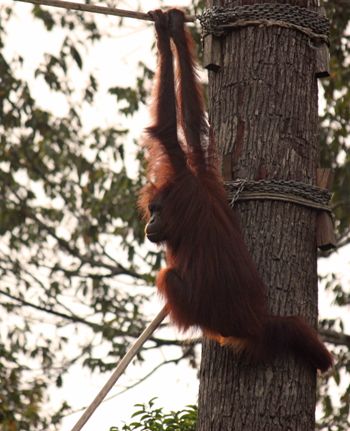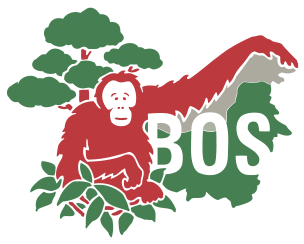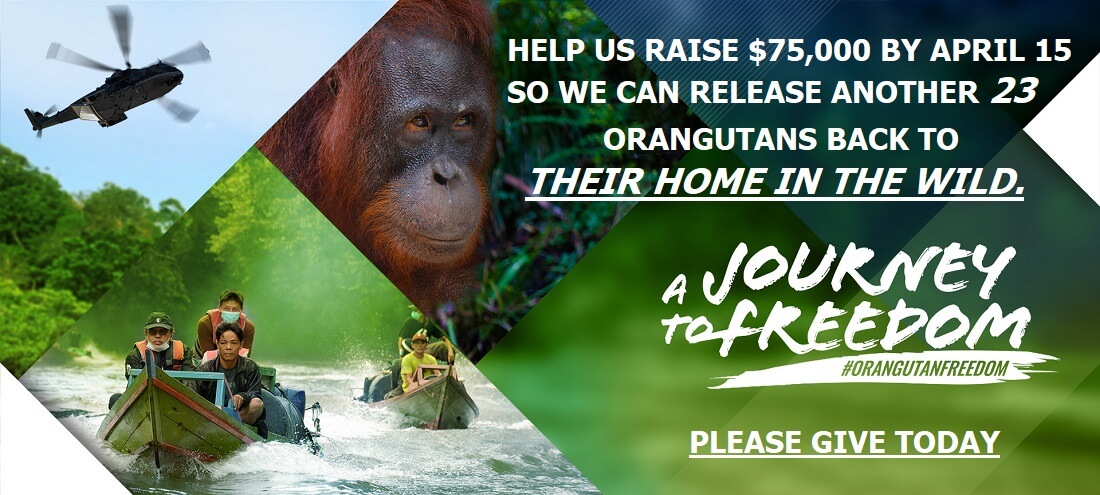Hope for survival as isolated orangutans joined by rope bridge
Hope for survival as isolated orangutans joined by rope bridge
mongabay.com: Jeremy Hance: April 11, 2010. Photo credit: Ajiran Osman @ Aji
Researchers in the Malaysian state of Sabah in Borneo are joyful after receiving confirmation that a young male orangutan used a rope bridge to cross a river, which has separated one orangutan population from another. Due to logging and clearing forests for oil palm plantations, which cover 18 percent of land in Sabah, orangutans on the Kinabantangan River have been cut into fragmented populations.
“Over the years we have received numerous local eye witness reports of the orangutans using these rope bridges but this is the first time we have received photographic evidence which clearly shows a young male orangutan using the first rope bridge we constructed in 2003 to cross over Resang river, a small tributary of Kinabatangan,” explains primatologist, Dr. Isabelle Lackman, Co-Director of the Kinabatangan Orangutan Conservation Project (KOCP) in a press statement.
 Photos of a male orangutan using the rope bridge were captured by Ajirun Osman, who says that after the male spent twenty minutes at the rope bridge, he crossed: “it seemed like once he decided to cross, he did so very fast going over in about three minutes from the Pangi Forest Reserve into Lot 1 of the Kinabatangan Wildlife Sanctuary.”
Photos of a male orangutan using the rope bridge were captured by Ajirun Osman, who says that after the male spent twenty minutes at the rope bridge, he crossed: “it seemed like once he decided to cross, he did so very fast going over in about three minutes from the Pangi Forest Reserve into Lot 1 of the Kinabatangan Wildlife Sanctuary.”
Orangutans used to cross such rivers employing the canopies of old growth forests, which easily spanned small rivers. However since the trees have been logged, researchers decided artificial bridges were needed to allow fragmented populations to meet. Six bridges have been built by KOCP, a joint venture between the Sabah Wildlife Department and the French NGO, HUTAN.
“Using rope bridges is a quick fix but eventually the most ideal solution would be to reconnect the forest and we are all working on this. And when I say ‘we’ I mean everyone from Governmental sector to environmental NGOs and crucially the palm oil industry as well,” said wildlife veterinarian Dr. Marc Ancrenaz who is also the Co-Director of KOCP.
A recent survey by the Sabah Wildlife Department and KOCP found 1,000 orangutans in the Lower Kinabatangan river area, inhabiting both protected and non-protected areas. These populations are estimated to go extinct in our lifetime, if they are not re-connected through schemes like the rope bridge, according to genetic studies done by the Sabah Wildlife Department, KOCP, Cardiff University, and the Danau Girang Field Centre.
“Today the orangutan is facing more human made obstacle’s such as illegal planting for oil palm all the way down to the river bank leaving no riparian reserve which are actually required by law under the Environment Protection Enactment of 2002 as well as the Water Resources Enactment of 1998,” says Lackman.
“Even though it will be an expensive and long process, reconnecting isolated populations which were originally linked together will ensure the long term survival of not only Sabah’s orang-utans but other unique species such as the Bornean pygmy elephants, the sunbears, the clouded leopards and many more,” add Dr. Laurentius Ambu, director of the Sabah Wildlife Department.
Last fall, a conference in Sabah including the Sabah Wildlife Department, NGOs such as HUTAN, and palm oil producers pledged to create wildlife corridors to save the state’s orangutan population and other endangered species. The pledge included land acquisition along rivers, such as the Kinabantangan, and to connect forest fragments.
During the conference, Tan Sri Bernard Dompok, the Minister of the Plantation Industry and Commodities, told member of the press: “I will support the effort to provide a corridor, even to acquire land compulsorily because this is in order to make our agriculture and tourism industry sustainable,”
The Bornean orangutan is currently classified as Endangered by the IUCN Red List, while its southern relation, the Sumatran orangutan, is considered Critically Endangered. Sabah supports an estimated 11,000 Bornean orangutans.





